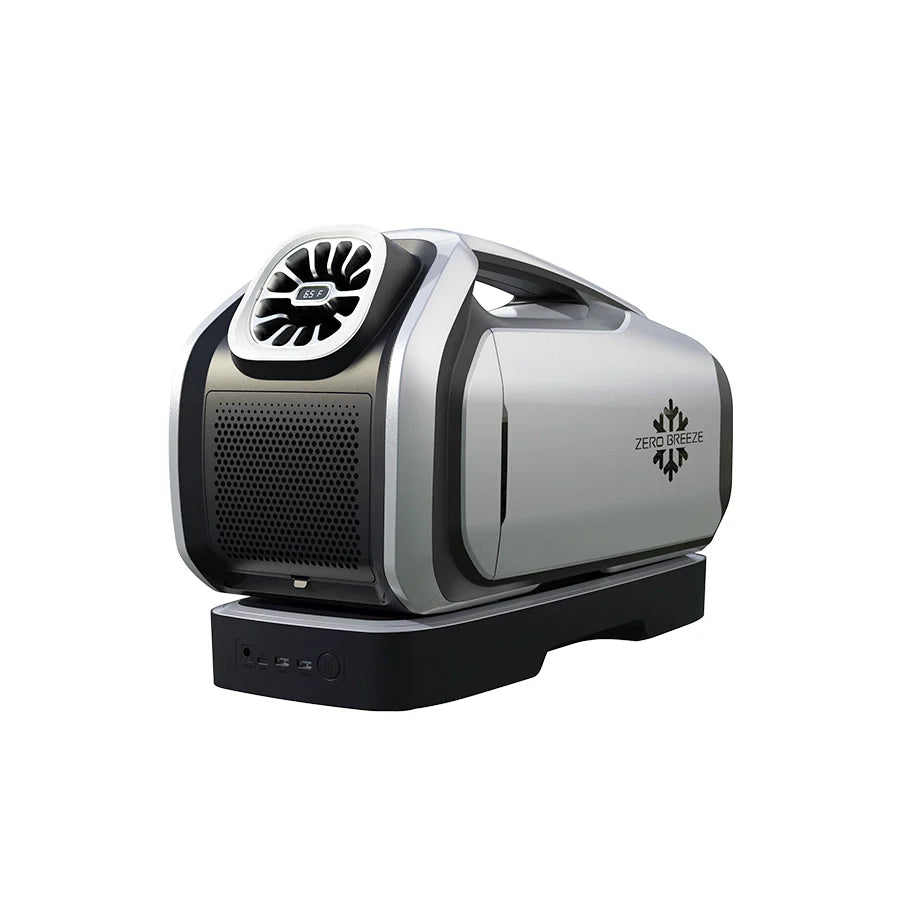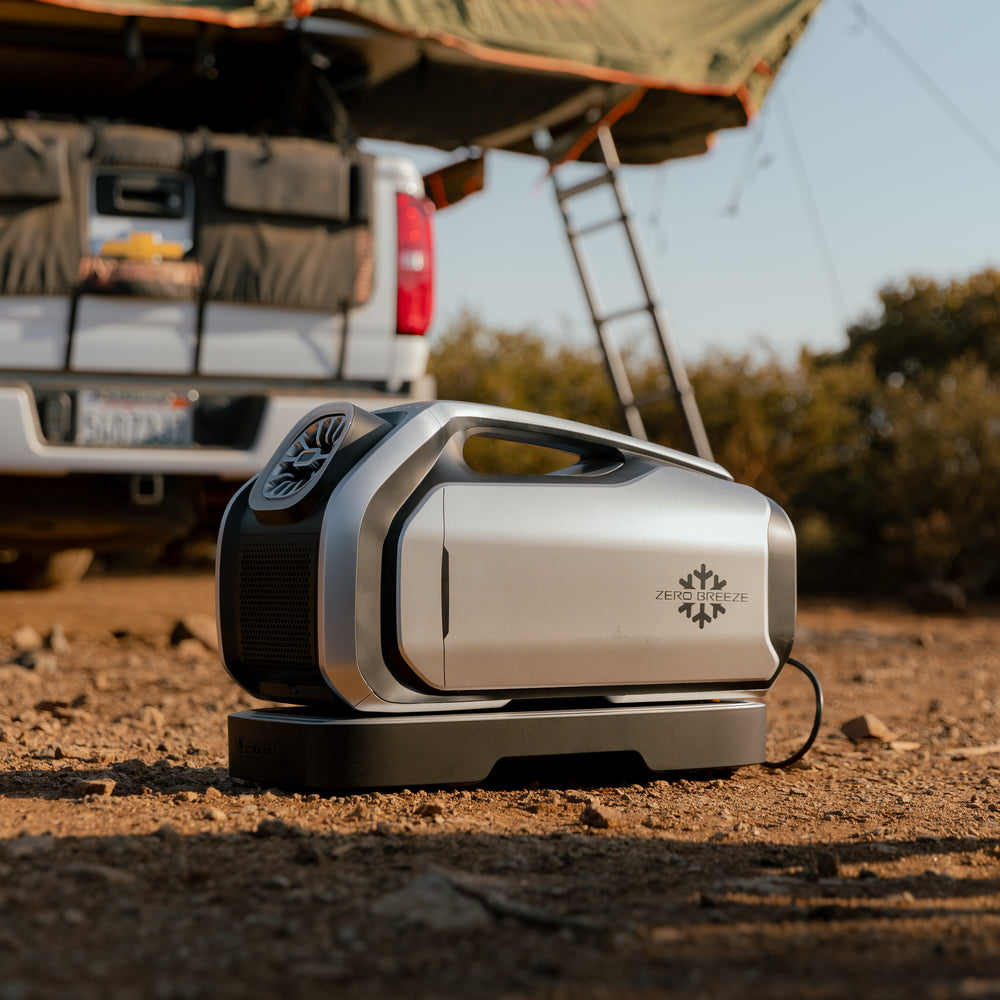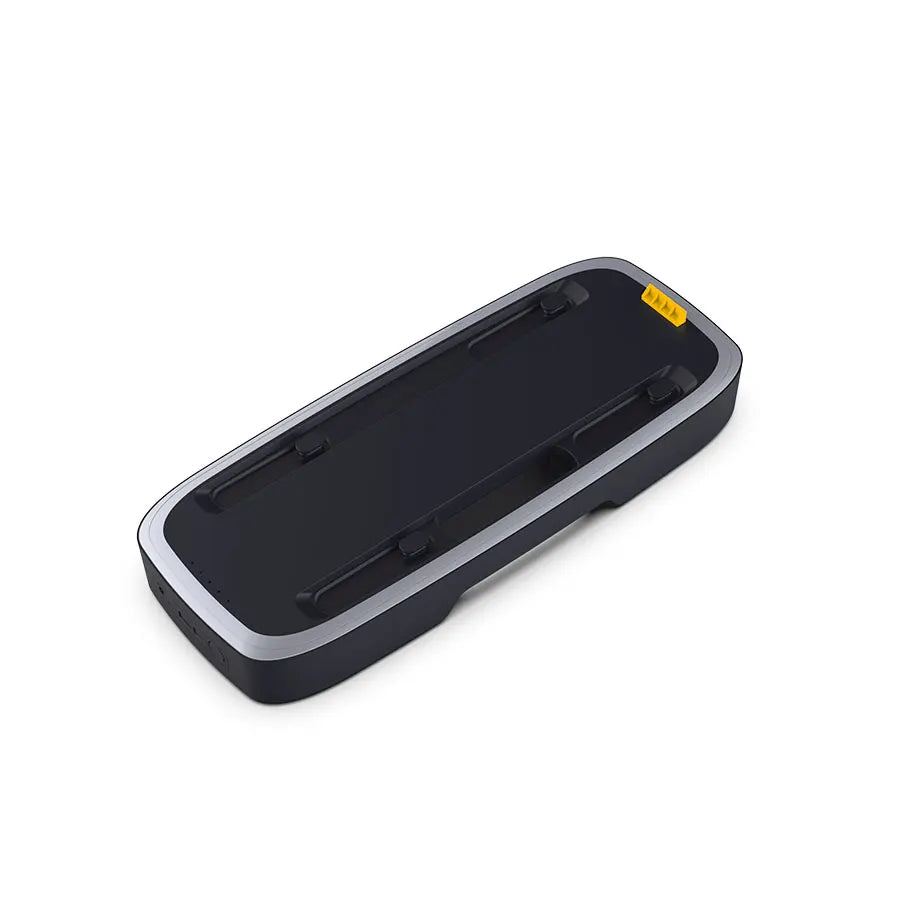Mark 3: Redefining the Rules of Cooling

During a summer camping trip in 2014, the sweltering heat and humidity was preventing Max from finding any comfort or relief in his sleep. As he tossed and turned throughout the night, his restless mind was equally as active. It was during this time that Max found the inspiration to create what would become ZERO BREEZE.
Max and his team began researching various cooling solutions that were available in the market. While fans were cheap and readily available, they merely provided air circulation and proved to be ineffective in hot and humid environments. Swamp coolers were both cost-effective and energy-efficient but they raised humidity levels and relied on ice, making them unsuitable for extended journeys. Portable air conditioners could provide sufficient relief . However, they depended on shore power, which was not always accessible. Furthermore, their bulky size suggested they were designed primarily for indoor use, contradicting the identity of their self-proclaimed “portable” air conditioner.

After exhausting all the options in the available market, Max was able to narrow down his focus. The following criteria must be met:
- Low power consumption: This meant that less energy was required and therefore can be powered by battery. This also meant off-grid possibility since the unit will no longer be dependent on shore power.
- Compact design: The portable air conditioner must be light and compact so that it can be easy to transport and fit in tents and other small spaces.
This was our guiding philosophy behind the design of our air conditioner.
How can we double the BTU but not the size?
“It’s often likened to building a rocket”, the team remarked when describing the challenges during the realization of the idea. Despite having two generations worth of experience and data, the development of the third generation remained a daunting task. How was it possible to drastically increase the cooling capacity while maintaining the size and weight?
Achieving a higher cooling capacity can be easily accomplished with stronger compressors and fans; however, this compromises size and weight. The team had to devise a method for redesigning the compressor to deliver greater cooling capacity within the same dimensions. One solution involved transitioning to R290 as the refrigerant, as it surpasses R134A in producing cold air. The transition was not a simple task of swapping refrigerants; it necessitated the establishment of an entirely new production line.
Additionally, the team conducted a thorough reassessment of the structural design of the Mark 2, relocating the larger evaporators and condensers to better fit within the same unit. To guarantee that all components could conform to the same dimensions, the team even had to custom-design some of them, as they were not readily available in the market but were specially crafted for the Mark 3.
Furthermore, merely optimizing components and the structure proved insufficient to attain the desired level of portability. Unprecedented upgrades were made, both in terms of circuit hardware system design and software control, to ensure that the Mark 3 is not only portable but also highly functional.
Our R&D team is committed to optimizing every feature of the Mark 3 to ensure you may have the best possible experience. More information will be shared with the group. We highly value your suggestions and feedback, as they may be considered for the development of an improved version of Mark 3.
We look forward to the launch and appreciate your continuous support and patience. Join our facebook community for more updates!












Wow my mk 1 still works great I’ve ran my mk2 with both batteries and the adapter close to 12 hours on sleep how can it get better let me know tks
Could this be used to turn a bedroom into a long term storage for root veggies squash apples canned food and buckets?
What is the difference between the II and the III
How much $$ for the III
One way may be by blending freon type.
40 years ago I worked for a company that made Polycold Chillers.
I don’t believe thy use them much anymore but where then used to bring a small chamber down to -125 ° for optical coating.
Just a thought.
David
Leave a comment